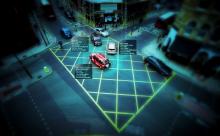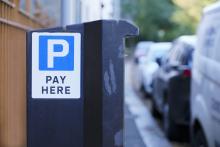
Joined-up thinking’ used to be a commonly related governmental phrase and implied a commitment to looking at elements of a problem to deliver a holistic solution. However, the way that successive governments have addressed major issues has demonstrated their inability to achieve joined-up anything.
The challenge appears to be in determining the level at which these issues need to be tackled and the order in which they should be fixed. Unfortunately, governments have a chequered track history of project failures that have resulted in confusion regarding departmental responsibilities and increased costs.
The way that the enforcement of clean air zones (CAZ), low emission zones (LEZ) and moving traffic contraventions are managed is a case in point. In the UK, there are three different government departments involved in parking, traffic, road safety and air pollution, all of which operate independently - with no apparent sharing of data or philosophy.
Different legislation
The siloed approach adopted by these departments has resulted in different pieces of legislation being drawn up relating to the way that CCTV cameras can be used. They include:
• Clean Air Act
• Transport Management Act
• Road User Charges Act
Surely it would have been better to have a single piece of legislation about how cameras can be used instead of the government’s Certification of Approved Device (COAD) legislation which imposes different certification requirements for the use of cameras based on type of scheme such as CAZ, ultra LEZ, road user congestion charging, parking and traffic enforcement. As well as being costly to manage, this legislation has resulted in inconsistency and confusion for both the vehicle drivers and the councils that are being asked to implement these schemes.
In addition, this legislation discriminates against councils outside London regarding the enforcement of traffic and parking contraventions. Whilst London councils can deploy cameras to enforce air pollution, congestion and road safety, it is shackling the powers of councils across the rest of the country to deliver similar outcomes. For example, regional councils are restricted to enforcing bus lanes and four types of parking including school ‘keep clears’ and red routes. But stopping in yellow boxes - which is preventing traffic flowing and is one of the root causes of air pollution - remains unenforceable.
Massive waste
This is also causing massive waste as multiple certificates legislate against using cameras to enforce more than one application. As a result, local authorities are having to deal with higher costs for procurement and ongoing maintenance as well as increased street furniture clutter. It really makes no sense to force councils to procure and install separate cameras to enforce different contraventions, particularly when they are trying to streamline their services and reduce costs in the face of extreme budgetary pressures.
Successive governments have demonstrated no apparent will to change despite the clear links between traffic congestion, road safety, parking and air pollution. This disjointed approach is making the situation more complex than it needs to be. It is time that the government had a major rethink as to what outcomes it needs to deliver over what period in order to start addressing the priorities, and demonstrate it is serious about tackling these issues rather than just paying lip service to them.
The recent case of Ella Kissi-Debrah, the nine year old girl who developed asthma at six years of age because of breathing in polluted air while walking to school and died three years later, should be a stark reminder to everyone in government that this is not the time to be complacent. Should Ella’s mum be successful in her challenge to have her daughter’s cause of death changed from asthma to air pollution, this will set a precedent for subsequent challenges and no doubt result in massive compensation lawsuits being filed against the government.
The technology to resolve these issues is already available and
Bath experience
An example of this multi-tasking can be seen in the City of Bath, one of the UK’s leading tourist destinations and a UNESCO World Heritage Site, which draws over 3.3 million visitors and 70,000 vehicles every day. Bath and North East Somerset Council has used bus gates to reduce cross-city movements during peak hours to assist the free flow of buses and other public service vehicles. It also used ANPR cameras to monitor bus lanes on key routes. In conjunction with a single mobile enforcement vehicle the cameras were generating around 30,000 penalty charge notices (PCNs) annually.
Since installing Videalert’s digital video platform, which integrated with Bath’s city-wide fibre network, the council has been able to achieve much more with the installation of ONVIF-compliant HD IP cameras. As well as replacing legacy camera assets in bus lanes and bus gates, new cameras have been installed in the Charlotte Street car park and park & ride locations to monitor usage and dwell times, data that now feeds into the council’s urban traffic management control (UTMC) to help guide drivers to the most appropriate parking locations.
The hosted digital video platform is enabling the council to achieve more by integrating it with other applications, such as permit parking, to drive further efficiencies. Linking mobile ANPR vehicles, including the latest ULEV mopeds, to the online permit database allows real-time checks of permits issued by the hour, reducing the time taken to patrol resident parking zones.
Smart cities
Information on non-compliant vehicles will then interface with the UK government’s new national CAZ database for vehicle validation and payment. The system will also provide detailed analytics and impact analysis highlighting the reduction in non-compliant vehicles entering the zone over time.
The Videalert platform is also being used in Bristol, the seventh largest city in the UK and 2018 Global Mobile Awards (The GLOMOs) winner of the Smart City category. This is an example of how ‘joined-up’ thinking and the efficient sharing of data can deliver an improved service at lower cost. An innovative partnership formed between Bristol City Council, Avon and Somerset Police and the Safer Bristol Partnership provided sufficient funding for a large fixed-site ANPR camera infrastructure that enabled data to be shared between all stakeholders, each with significantly different requirements.
This was the chosen solution as it seamlessly integrated with existing CCTV infrastructures and the city-wide B-Net, a fibre-optic network used for running traffic signals and other traffic management applications. The platform now handles and processes video from over 155 cameras and the vehicle registration mark (VRM) data is used for a variety of applications.
In conclusion, despite the lack of leadership and joined-up thinking from central government, councils such as Bath and North East Somerset and Bristol are making use of innovative technology to deliver improved outcomes for their citizens. By using multi-purpose systems based on open architecture with vendors with a proven track record of breaking down data silos, they have both demonstrated that significant benefits can still be achieved in the face of paralysis in government.








